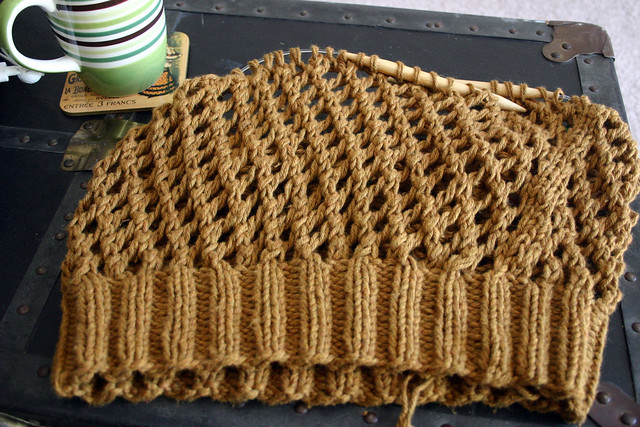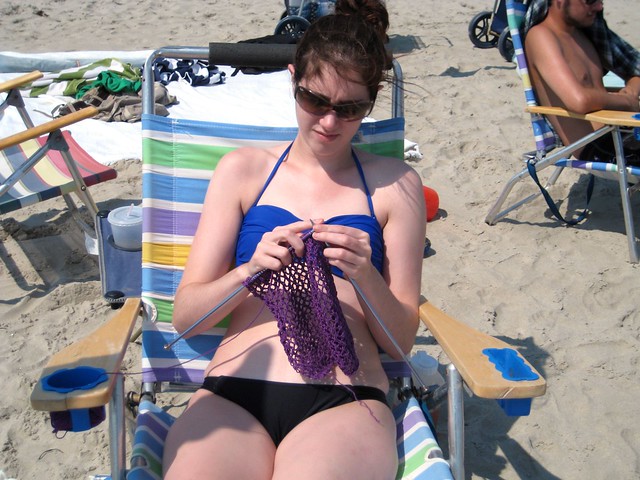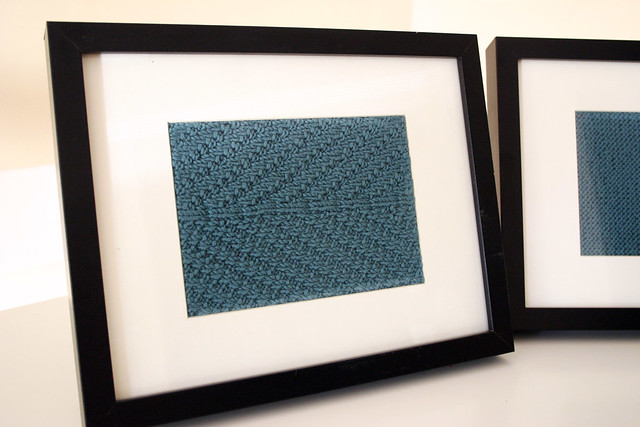
All knitter’s have one: that sweater that you tried so hard to “make it work,” but all that ever resulted from it were tears, frustration, and wasted yarn. I’ll admit I have a couple of those hidden in knitting bags in the back of my closet, destined to never to see the light of day again. But as I was settling into my new digs and decorating my craft room (aka my bedroom that also houses my sewing machine and yarn stash), I came across some unused picture frames and thought up a way to bring those unwanted, failed projects back to life: knitted art!
Materials:
Sweater or knitted item (must be large enough to frame)
Picture frame
Fabric chalk or pencil
Thread (optional)
Needle (optional)
Fray Check
Packing tape
Fabric scissors
Directions:
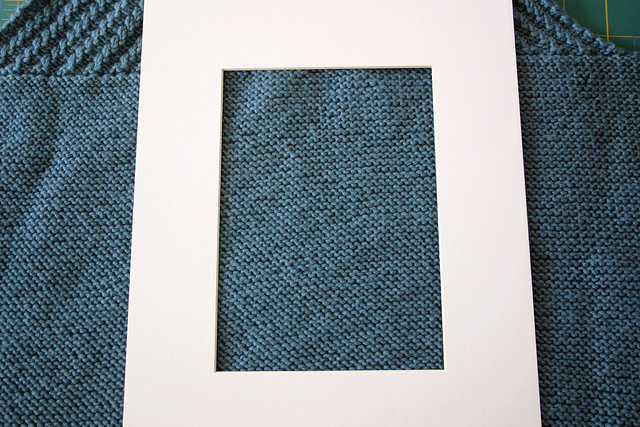
Step 1. Use the mat of your picture frame (mine is an Ikea Ribba frame) to determine what section of your knitting you’d like to highlight. Keep in mind that you’ll want to have enough for a “seam allowance” around the framed section that can be secured onto the mat. Otherwise your knitted piece won’t stay in place once framed.
With your fabric chalk or pencil, trace the inside perimeter of the mat onto the knitted fabric. These marks will be the guideline that you’ll cut around for your knitted art. You should get something that looks like this:


Step 2. This step is optional, as I realized after my first attempt at framing knitted fabric, but I thought I’d include it anyway. Using a needle and thread, trace the chalk outline by backstitching around the perimeter of the markings. This step is designed to secure the knitted edges from unraveling, but doesn’t *have* to be completed if you don’t want to. You rebel you.
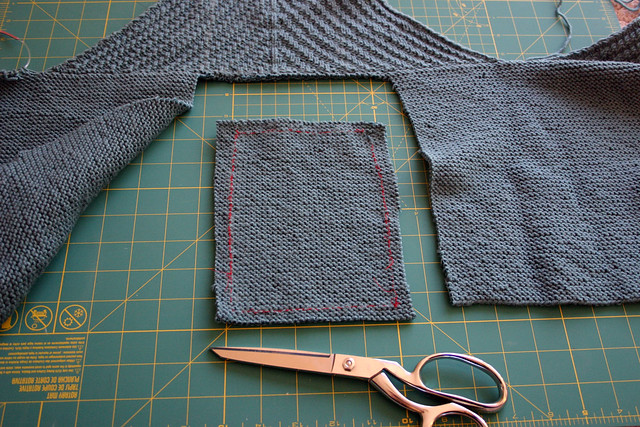
Step 3. Using sharp fabric scissors, cut out your knitted swatch, leaving a reasonable margin around the original chalk markings/stitching lines. Sweater sacrilege! I’ll admit, I was a little nervous doing this step.
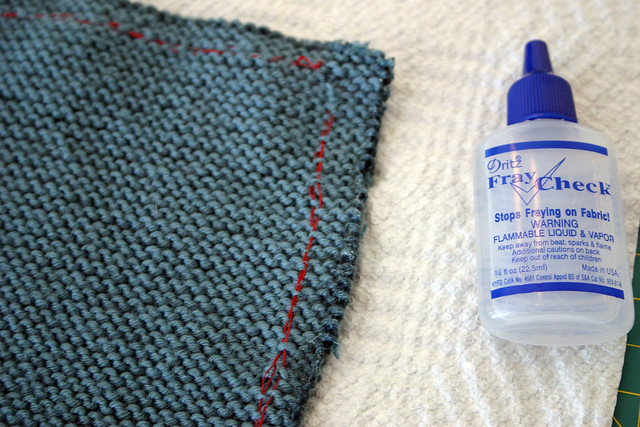
Step 4. Apply Fray Check to all edges of your knitted swatch. Make sure it’s enough to saturate the entire thickness of your swatch – don’t be shy. This stuff is really what’s going to keep those knit stitches from coming apart. Allow to dry for a few minutes before continuing on.
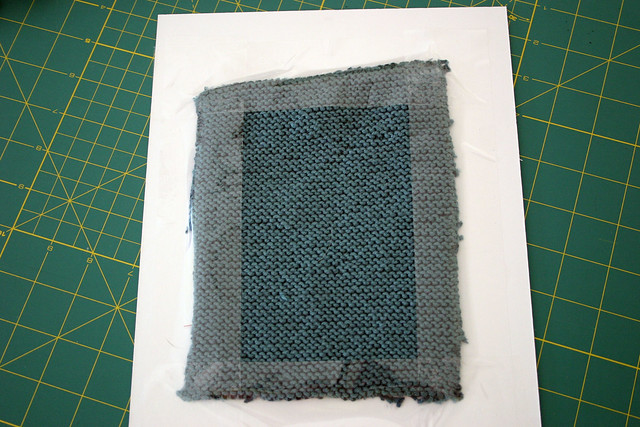
Step 5. With right side facing down, Position and center the knitted swatch over the opening of the picture frame mat – make sure that the chalk lines and/or stitching isn’t exposed on the right side when the mat and swatch are flipped over. Use packing tape to secure all four edges of the knitted swatch to the mat. Pop the mat into the picture frame and you’re done.
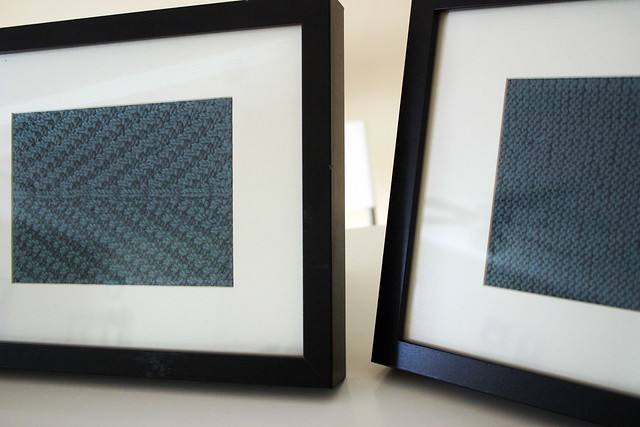
My failed sweater had two different stitch patterns I wanted to highlight, so if you have enough left over, make a matching framed swatch to create a “gallery look” on your walls.

